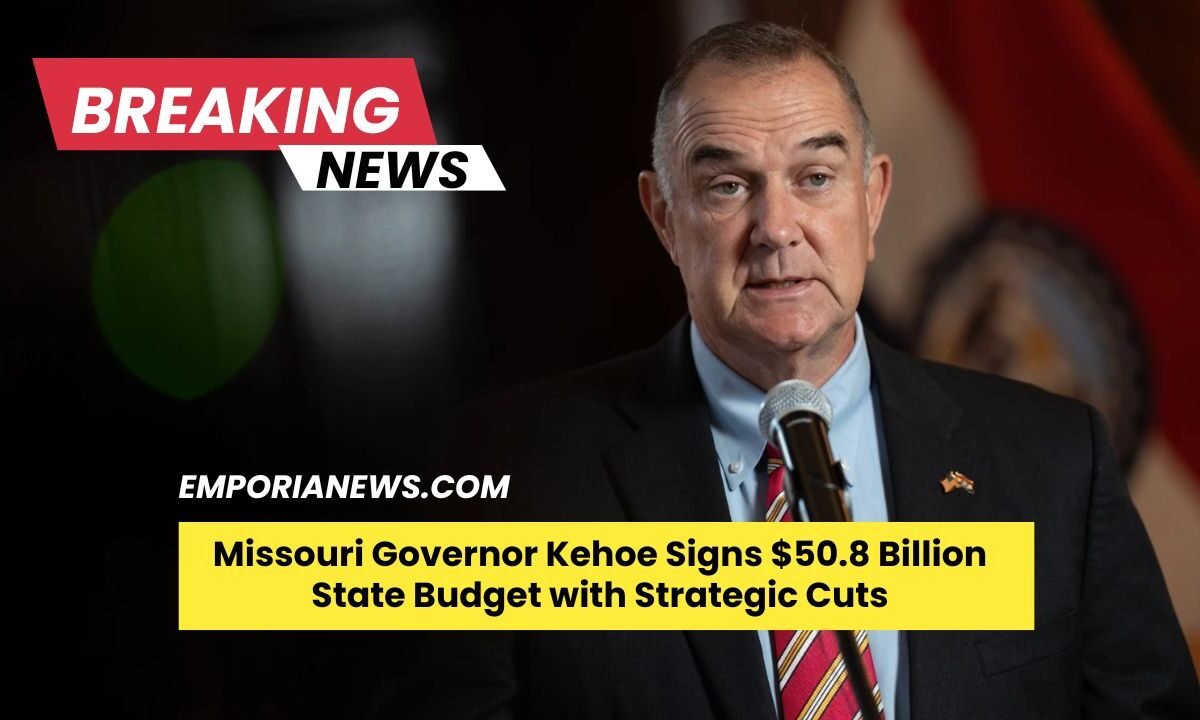Gov. Mike Kehoe officially enacted the state budget for the upcoming fiscal year on Monday, signing a collection of bills totaling approximately $50.8 billion.
This final figure is over $2 billion less than what Missouri lawmakers initially passed in May, reflecting Kehoe’s targeted vetoes and fiscal restraint.
Education Receives Significant Funding with Select Reductions
Full K–12 Funding Secured
One of the budget’s major highlights is the full funding of Missouri’s K-12 public education foundation formula, a provision added by the State Senate.
The budget also earmarks $375 million to cover the entire cost of school transportation, fulfilling the state’s obligation to public schools.
Empowerment Scholarship Program Gains $50 Million
A key priority for Gov. Kehoe that remained intact is the $50 million allocation to the Empowerment Scholarship Account (ESA) program, which provides financial support for families to enroll their children in schools of their choice, including private institutions.
Vetoes in Education Spending
Despite substantial support for education, Kehoe struck down several items. These include:
- $2.5 million cut from a literacy initiative in St. Louis.
- A reduction of over $3 million—including $1.6 million in general revenue—previously proposed for teacher recruitment and retention scholarships. Kehoe justified this move by citing the existing $800,000 already included for the program.
Higher Education Adjustments
Missouri’s community colleges, technical schools, and four-year universities will see a 1.5% increase in funding based on the Consumer Price Index (CPI).
Though the legislature proposed a higher increase, Kehoe vetoed the additional amount.
Mixed Outcomes for Transportation Initiatives
Support for Rural Roads
The governor highlighted a $91 million investment aimed at improving rural road infrastructure, ensuring progress in underserved areas.
Major Cuts to MoDOT Construction Funds
However, Kehoe’s largest single veto was a $1 billion reduction from the Federal Road Fund Spending Authority, intended for the Missouri Department of Transportation’s (MoDOT) construction projects.
Kehoe explained that the necessary legislative framework to authorize this spending was not passed, and using this fund could potentially violate Missouri state law.
Additional allocations under the Federal Road Fund were similarly vetoed due to legal and procedural concerns.
Fiscal Caution Amid Rising Expenses
Budgetary Breakdown and Spending Gap
Out of the $50.8 billion total, the budget includes $15.4 billion in general revenue. Kehoe’s office noted that lawmakers added nearly $775 million in new general revenue spending beyond the governor’s original proposal.
Although Missouri currently has a general revenue surplus, Kehoe warned that the rate of spending could deplete this buffer, leading to a future budget shortfall based on projected revenues.
Unplanned Expenses Add Pressure
Additional strains on the budget came from unanticipated costs, including:
- The full funding of the K-12 education formula.
- Over $100 million in storm recovery and disaster relief efforts.
While acknowledging the necessity of storm assistance, Kehoe stressed the importance of ensuring these costs are appropriately balanced within the overall budget.
Capital Gains Tax Elimination Cited
Kehoe also pointed to the passage of legislation eliminating Missouri’s capital gains tax as another reason to tighten state spending, given its impact on future revenue streams.
Widespread Vetoes Signal Fiscal Discipline
In total, Gov. Kehoe issued 208 vetoes, cutting close to $300 million in general revenue expenditures.
These vetoes reflect the administration’s intent to align spending with sustainable revenue projections, especially in light of new fiscal pressures and economic uncertainties.
Gov. Mike Kehoe’s approval of Missouri’s $50.8 billion budget showcases a blend of investment in education, infrastructure, and community needs, while exercising fiscal restraint through targeted vetoes.
With major reductions in transportation funding and scholarship programs, the governor aims to maintain budgetary balance amid evolving challenges, including tax changes and natural disaster relief.
As the fiscal year begins, the state’s financial health will hinge on responsible implementation and monitoring of this refined spending plan.




